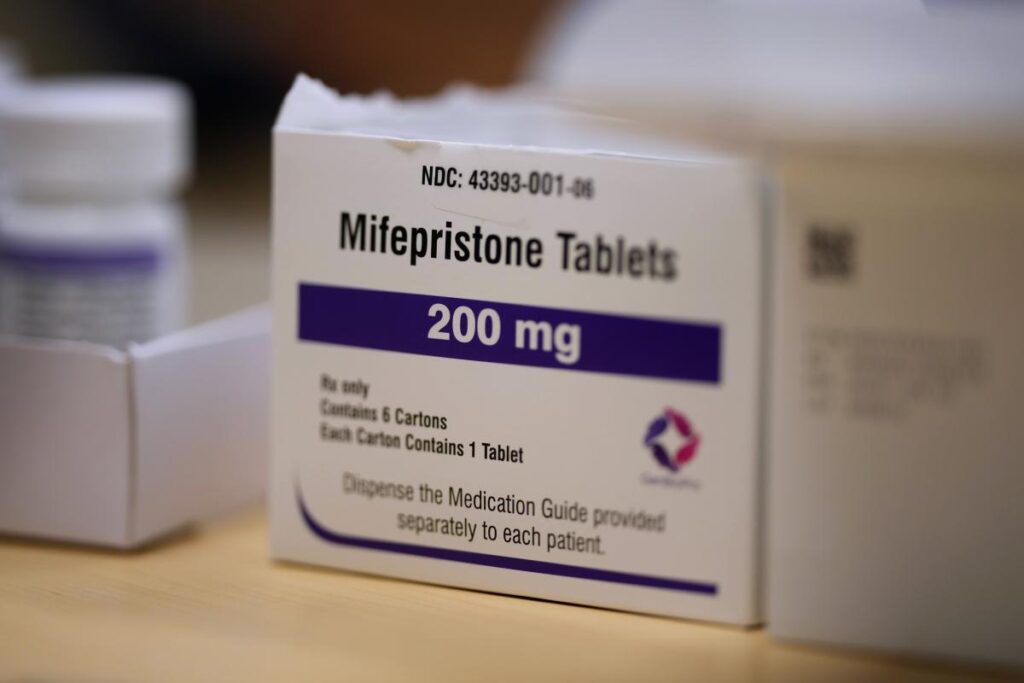The landscape of abortion rights and restrictions in the United States is poised for significant changes should Donald Trump secure a second term in the White House. Advocates for anti-abortion policies assert that dismantling the existing pro-abortion framework established under the Biden-Harris administration will be a priority. They specifically point to recent federal guidance which mandates hospitals provide emergency abortions when a woman’s health or life is at risk and measures that facilitated the online ordering of abortion pills. The Susan B. Anthony List, a prominent anti-abortion advocacy group, has articulated a commitment to undoing the current administration’s policies while recognizing Trump’s previous achievements in the realm of pro-life legislation as a foundation for future actions. Although specific plans for targeting the Biden administration’s abortion policies have yet to materialize, abortion rights advocates remain alert to potentially stringent restrictions once Trump re-assumes office.
Trump’s approach to abortion rights has been notably complex, as he has pronounced that abortion issues should largely be handled at the state level rather than federally. Nonetheless, his efforts during his first term, such as nominating justices to the Supreme Court who supported overturning federal abortion rights, reflect his broader anti-abortion agenda. His administration could embark on initiatives to appoint judges sympathetic to pro-life causes and create regulations conducive to restricting abortion access. Despite Trump’s stated support for exceptions in cases of rape, incest, or threats to a woman’s life, he has yet to explicitly endorse exemptions related to a woman’s health, leaving substantial room for interpretation within the medical community about the gravity of various health-threatening pregnancy complications.
Under a Trump administration, expectations are that the guidance requiring emergency rooms to conduct necessary abortions will be rescinded. The Biden administration defended this directive by citing long-standing federal law, which mandates that hospitals offer stabilizing treatments in order to qualify for Medicare funding. Reports of women being sent home or facing complications when seeking treatment have emerged since the Supreme Court’s decision to revoke national abortion rights in 2022, leading to dire outcomes like infertility and even death. Advocacy groups pledge to continue their legal battle should the Trump administration repeal existing emergency care directives. Moreover, hospitals in states with restrictive abortion laws have expressed that this federal guidance provided legal protections for performing emergency abortions, showcasing the tension between state and federal laws on this contentious issue.
Legal precedents underscore the complexities surrounding abortion access, particularly regarding state laws which may inhibit medical interventions that could save lives in precarious situations. In states such as Idaho, rigid abortion laws forced hospitals to transport critically ill pregnant women to other states to receive timely care. The Biden administration’s lawsuit against Idaho hinged on the conflict between state law and federal requirements for medical treatment, resulting in minimal amendments to state regulations but leaving many life-threatening scenarios inadequately addressed. In the face of inconsistent judicial rulings and ongoing litigation, a patchwork of abortion regulations will likely persist in a Trump administration, with victories for abortion rights advocates in various states counterbalancing more restrictive stances in others—demonstrating a divided national opinion on the issue.
The future of accessing abortion pills, especially in light of increased acceptance and easier access during the COVID-19 pandemic, may also face reevaluation under a Trump presidency. The FDA’s facilitation of abortion pill access via telehealth and mail-order services stands in stark contrast to the vehement opposition from anti-abortion advocates who question the safety and appropriateness of these practices. Notable spikes in online orders for abortion pills after the recent election signal anxiety among women concerned about potential crackdowns on these measures. Despite the Survival of mifepristone—one of the key drugs for medical abortions—remaining intact for the moment, advocates are bracing for a more hostile regulatory environment once Trump returns to power.
Telehealth services that provided ease of access to medication as part of reproductive health services have already seen drastic increases in demand, especially in restrictive states, as women seek alternative means to secure necessary care. Companies facilitating reproductive health services, like Wisp, report considerable jumps in orders for both abortion pills and emergency contraceptives, pointing to a significant influence of political climates on consumer behavior in the reproductive health sector. To adapt to forthcoming legislative changes, platforms providing these services are preparing contingencies, such as transitioning to a different pill regimen should access to mifepristone be curtailed. This reflects a broader trend of adaptability within the reproductive health market in response to anticipated governmental shifts.
Despite Trump’s strong backing from anti-abortion organizations throughout his campaign, analysts like Mary Ziegler note the unpredictability of his potential policies, as he has shown a history of altering his Stance on abortion. His reluctance to endorse a formal national abortion ban raises questions about how far he is willing to go in either enforcing or constructing anti-abortion legislation. With the battles over abortion rights expected to intensify in the coming months, both sides of the debate are gearing up for a pivotal era in women’s health that could redefine access to reproductive care across the United States. As the nation approaches another phase of its ongoing discourse on abortion, the implications following the elections will shape the political and social fabric regarding reproductive rights in America.

